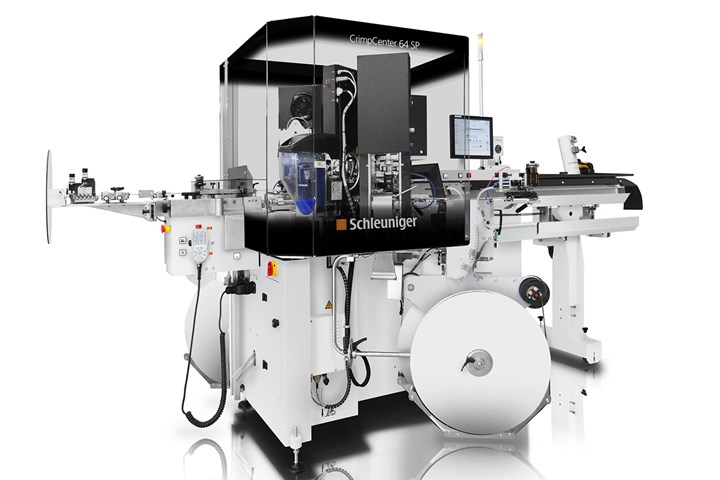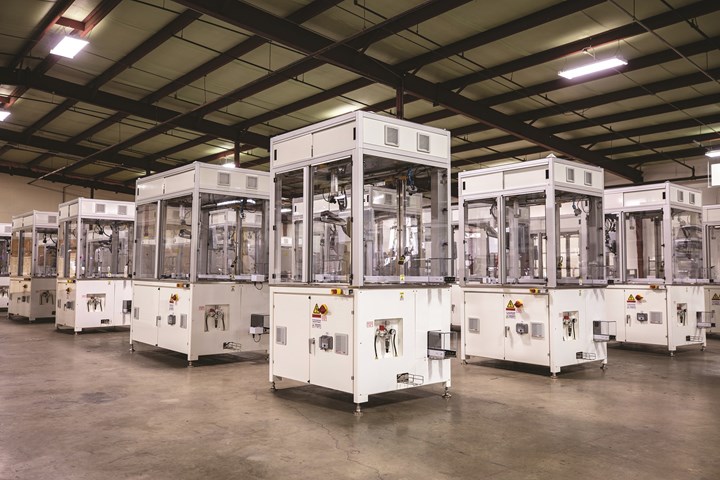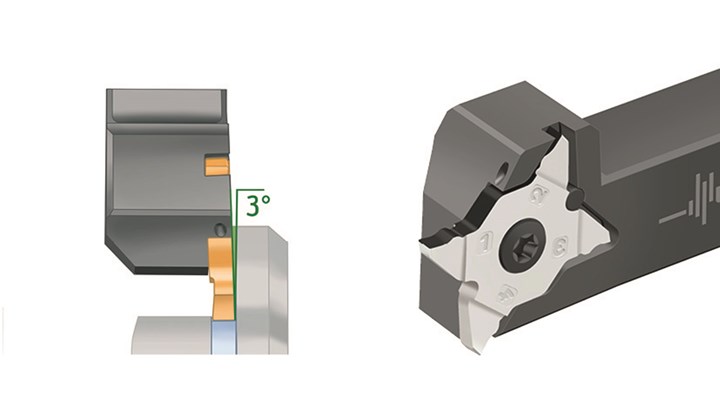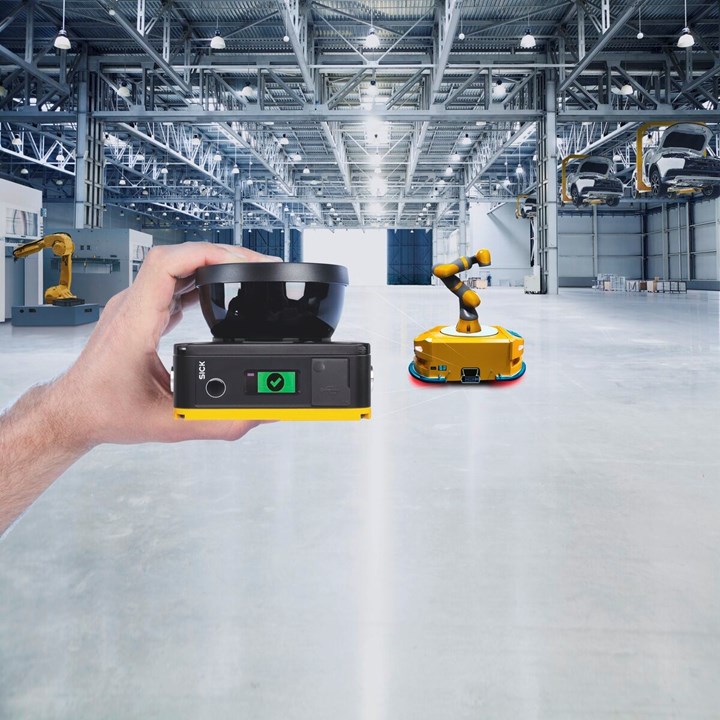Tools You Can Use
Here are a few useful developments for your manufacturing operations, whether it is making components for electrical systems or camshafts or more.
Advanced Crimping System

(Image: Schleuniger)
Given the increase in automotive wiring, the CrimpCenter 64 SP can provide an increase in output, with, according to system manufacturer Schleuniger can provide a cost-per-lead advantage of 5% compared with the company’s earlier offering (it is said to have faster production on the order of 8 to 14% faster). The new machine features a function (“Dual ToolingShuttle”) that allows the setup of a new job while one is running so that applicators and terminals can be changed in just 30 seconds. “Material Change Detection” registers changeovers of wires, terminals or crimp applicators during production and thus meets the standards set by end users. Other notable features include: Application-specific default values for process parameters, automatic control of the pneumatic pressure of feeding belts and gripper systems, and a newly developed roller design for very thin, demanding cables.
www.schleuniger.com
Linear Pallet System for Machine Tools

(Image: Grob)
In order to provide users of its machining systems (e.g., G550a, G552, G552T) with the opportunity to increase productivity, GROB Systems has developed the PSS-L, a linear pallet storage system. It works with a stand-alone machine or allows the connection of up to five machine tools to creates an interlinked machining system that can be connected to pallet storage racking with a maximum of 87 pallet positions. The PSS-L features a pallet gripper to transport materials between setting stations, workpiece deposits and machines. There is no cable track. There is high storage density with a small footprint. Pallets are staged close to the machine tools so as to minimize pallet change time.
www.grobgroup.com/en
Featured Content
Modular System for Developing Automation

(Image: Tooling Tech Group)
A system to readily build automation cells has been developed by Tooling Tech Group. Called “FLEXBASE,” this modular system allows integration with robots, vision systems, lasers, and other tech. It features a welded steel frame base that measures either 48 x 40 inches or 72 x 40 inches. There is a 37-inch high aluminum top plate that can be fitted with custom tooling or fixturing. There are upper and lower conveyors and pallets with nests to accommodate various parts. It uses Allen Bradley Compact GuardLogix controls and 24 VDC power supply. The system can operate as a standalone station with manual load/unload or several of the units can be connected with conveyors for an automated line.
www.toolingtechgroup.com/flexbase
Grooving System for Camshafts

(Image: Walter)
Grooving along a shoulder with workpiece material savings can be accomplished with a system developed by Walter to perform the task: in includes a G3051-P groove turning holder and MX22-21/R indexable inserts (that come in both right- and left-hand versions). The insert installation position is inclined by 3° in the pocket, which facilitates deep grooving along the shoulder. The tangential arrangement of the inserts provides flatness and surface quality on the machined components. The tool holder is designed for use CNC lathes, automatic lathes and multi-spindle machines. The holders are available in shank sizes of 0.625 to 1.0 inches and 12 to 25 mm. The inserts provide four edges and are available with GD8 and VG8 geometries (with the latter being developed for finishing operations behind a collar). There are large contact surfaces and a patented dowel pin location in the inserts so stability, precision and indexing accuracy are enhanced. According to Walter, this grooving system is ideally suited for the high-volume production of components like camshafts.
www.walter-tools.com/us
Compact Safety Scanner

(Image: SICK)
As there is an increasing number of autonomous carts and cobots in factories, SICK has developed an ultra-compact safety scanner, the nanoScan3, which is compact, measuring 3.15 inches in height, so it can be deployed in places where there is minimal mounting space. The unit uses the company’s “safeHDDM” scan technology which means that whereas conventional scanners produce some 500 pulses per scan, it generates 80,000, which means the scanner is not affected by interference from dust, contamination and ambient light. It provides up to 128 configurable fields and monitoring cases. It offers a protective field range of three meters with a scanning angle of 275°. It has two pairs of OSSD safety outputs. It can be readily integrated with standard M12 connectivity.
www.sick.com
Ethernet Cables for Industry 4.0

(Image: igus)
Facilitating the deployment of Industry 4.0, igus has developed two Ethernet cables for use in production operations The cables, CFBUS.045 and CFBUS.049, are highly flexible and durable (they’ve been tested in the company’s lab over 76 million strokes and a bend radius of 9.5 x d). The CAT5e and CAT6 chainflex Ethernet cables are specifically engineered to meet the needs of providing secure and long-lasting connections between networked components that are now being more commonly found in manufacturing operations where CC-Link IE technologies are deployed. One of the issues with cables in some of these applications is that there can be data errors that can be a result of cable degradation resulting from the movement of cables (think of moving axes); igus has developed these cables to address that issue.
www.igus.com


.jpg;width=70;height=70;mode=crop)



